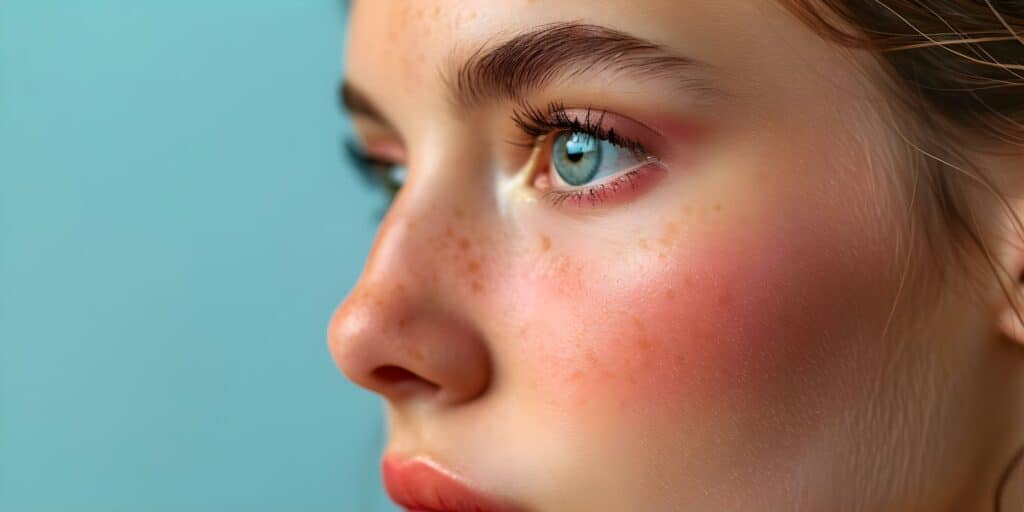Rosacea is a common presenting complaint in the clinic, originally thought to be predominantly affecting the Celtic skin types, however with the development of technology such as the Observe skin scanners we can see it in all ethnicities. It is often misdiagnosed as acne. Rosacea is a chronic inflammatory skin condition causing skin sensitivity, ruddy or flushed skin, visible/broken blood vessels, and in severe cases, bumps and pimples.
This condition typically manifests as redness on the central face, including the cheeks, nose, forehead, and chin. Although its exact cause remains unknown, factors like genetics, abnormal blood vessels, and inflammatory reactions are believed to play significant roles. Triggers such as sun exposure, spicy foods, alcohol, stress, and certain skincare products can exacerbate symptoms.
As this is a chronic skin condition the objective is to manage the symptoms to make life as comfortable as possible for those affected. Traditional strategies will be explored in a separate blog however here we are exploring an emerging avenue of treatment gaining attention which is the use of Botox injections.
Botox, is the common name most people use when talking about Botulinum Toxin Type A, for ease of writing and reading this blog we will use this terminology, however, please note this is just a brand name. This is a prescription-only medication used for numerous health indications but it is primarily known for its ability to reduce fine lines and wrinkles. It does this by temporarily paralysing muscles that contribute to the development of wrinkles.
Recent studies suggest that Botox injections may also offer therapeutic benefits for rosacea patients. This is an off-label indication so must be discussed with your healthcare provider. The therapeutic response is believed to be from 3 different actions.
- Neurogenic Inflammation: Rosacea involves heightened neurogenic inflammation, where nerve endings release substances that trigger inflammatory responses. Botox is thought to interrupt this process by blocking the release of neurotransmitters. This in turn reduces inflammation leading to a reduction of rosacea symptoms such as redness
- Vasodilation: Blood vessel dilation is a hallmark feature of rosacea, contributing to facial redness. Botox injections may help in constricting blood vessels, leading to decreased redness and visible blood vessels.
- Sebum Production: Some studies suggest that Botox injections could also regulate sebum production, which may benefit individuals with rosacea, particularly those prone to papules and pustules.
While the concept of using Botox for rosacea is relatively new, there is growing interest and research in this area. Several small-scale studies and anecdotal reports have shown promising results in reducing rosacea symptoms, including redness and flushing, with Botox injections. A systematic review in 2021 showed improvement in ALL patient’s signs and symptoms compared with baseline. However, larger, controlled clinical trials are needed to establish its efficacy and safety definitively.
As with any medical procedure, Botox injections for rosacea treatment come with potential side effects and considerations. These may include temporary bruising, swelling, headache, or eyelid drooping (ptosis) or temporary unwanted muscle paralysis that could affect your smile.
If you are interested in reading more Zhang et al, 2021, Clin Cosmet Investig Dermatol. Explore much of the research on this subject.









